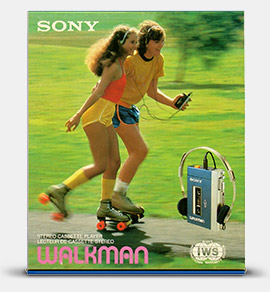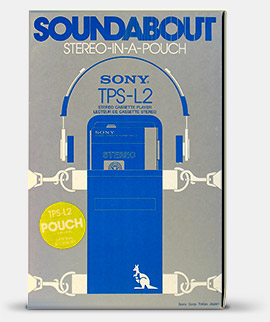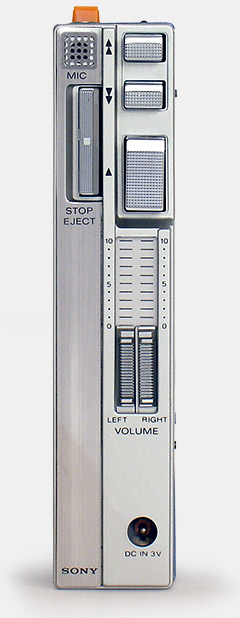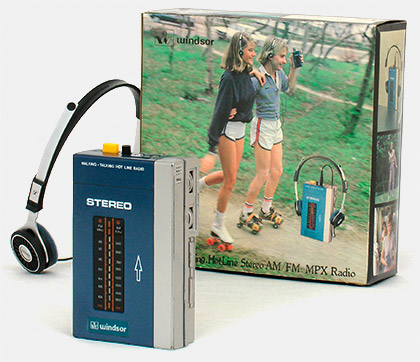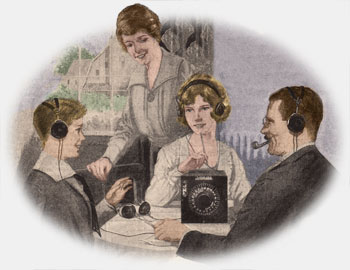
The Sony Walkman
With all the things I collect, why devote an entire page to one single device, the Sony Walkman?
Well, I’ll tell you. It’s all about the headphones.
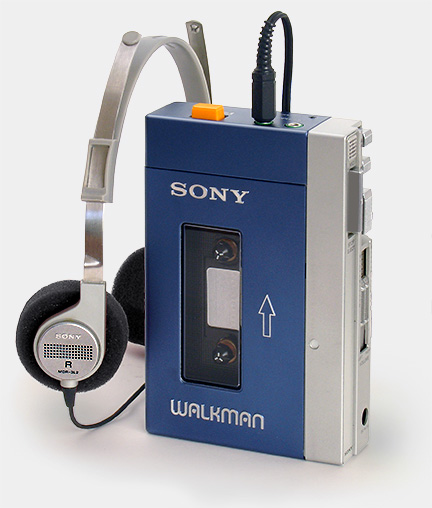
Early radio, circa 1920, could be heard only on headphones. That’s Junior, Edna, and Pops listening in while mom looks on wondering why this stupid family has radio but still no electric vacuum cleaner. Telegraph operators wore headphones. Later, disk jockeys and airplane pilots wore headphones. And in the 1960s when the technology got good enough, hi-fi buffs discovered headphones.
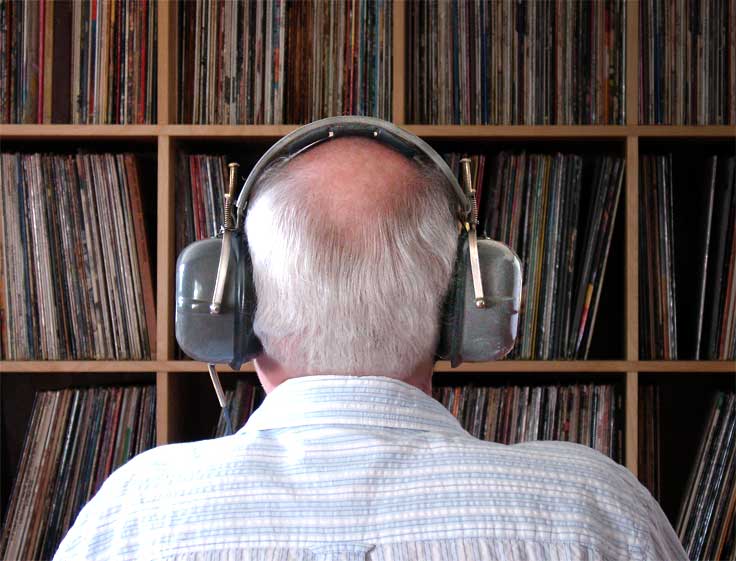
Other than that, virtually no one used headphones. They were not in any sense of the word “mainstream.” Until the Sony Walkman in 1979.
Today, listening to audio with both ears covered— with headphones or earphones— is common. The TPS-L2 Sony Walkman is the device that made that common. It changed the way people “consume” music and other audio. For the first time, high fidelity was mobile. That change in listening habits has proven to be more than a fad as headset use remains common these several decades later. So you see, I think the Walkman is important. And it’s all about the headphones.
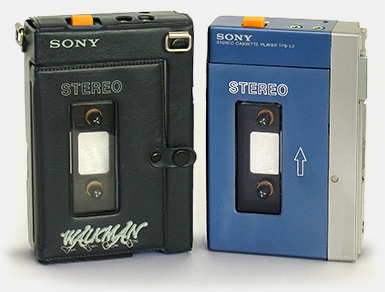
The Walkman was, in today’s parlance, a “disruptive technology;” even Sony was uncertain about the potential for its new product. Sony was even unsure of the name “Walkman,” issuing the TPS-L2 without a name at first, with just the word “STEREO” on the front in large letters.
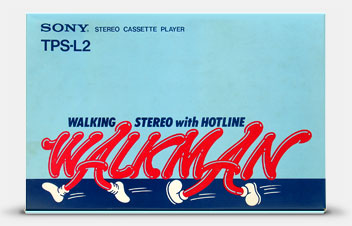
The use of this large “stereo” was not merely a placeholder for a brand name to come; never before had a portable music player this small been stereo and, as implied by the word, high fidelity. Sony was the first to realize that users of portable sound devices could care about fidelity.
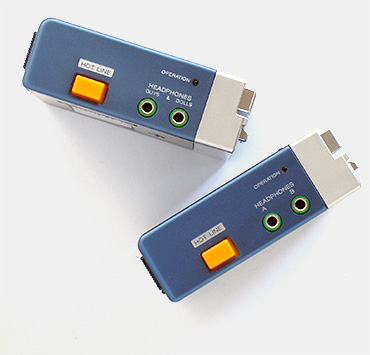
Sony issued this unmarked player in the US as the “Soundabout” and in the UK as the “Stowaway.” Testing the Walkman name, a “walking feet” logo was designed with the phrase “Walking Stereo with Hotline.” It was used on some early vinyl cases and, as a sticker (see photo below), on even fewer early Walkmans. Eventually a new, simpler logo was devised and the TPS-L2 model was branded Walkman internationally. Most were sold in this configuration as shown in the first picture (above). And most were sold in the box you see here that for obvious reasons I call the “skate box.”
Headphone jacks on a few (very few) of the earliest TPS-L2 models were labeled “Guys & Dolls.” Later ones are labeled simply “A” and “B.”
The importance of the lightweight MDR-3L2 headphones that came with the TPS-L2 Walkman cannot be overstated. If the Walkman was to be successful, it couldn’t come with the bulky, heavy, headphones that were then the state of the art. Sony’s new headphones were high fidelity, yet weighed about 1/5 of typical headphones at the time. They were crucial to the Walkman’s success, enabling the two main components of that success: mobility and the creation of personal space.
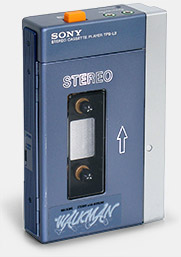
The first Walkman’s headphones are remembered by many as having orange earpads. Orange replacements were available to fit the Walkman, and some later Walkman models did come with orange pads, but the TPS-L2 is shown on original boxes, literature, and advertising with black pads so it is assumed all were originally black, notwithstanding the 2014 movie Guardians of the Galaxy.
For more on the early Walkman, visit Personal Music Players where you can see its forerunner, the Sony TCM-600 “Pressman,” and also see what came next in personal music.
With the success of the Walkman came the imitators.
But of course. And for more on the interesting, subversive field of collecting ripoffs, knockoffs, and clones: go here.
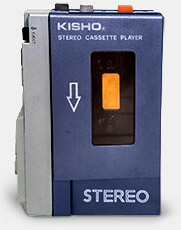
The Kisho MC-101 cassette player knockoff is from Hong Kong. It is a shameless piece of junk and, like the Windsor below, it “borrows” Sony’s “Hot Line” button.
